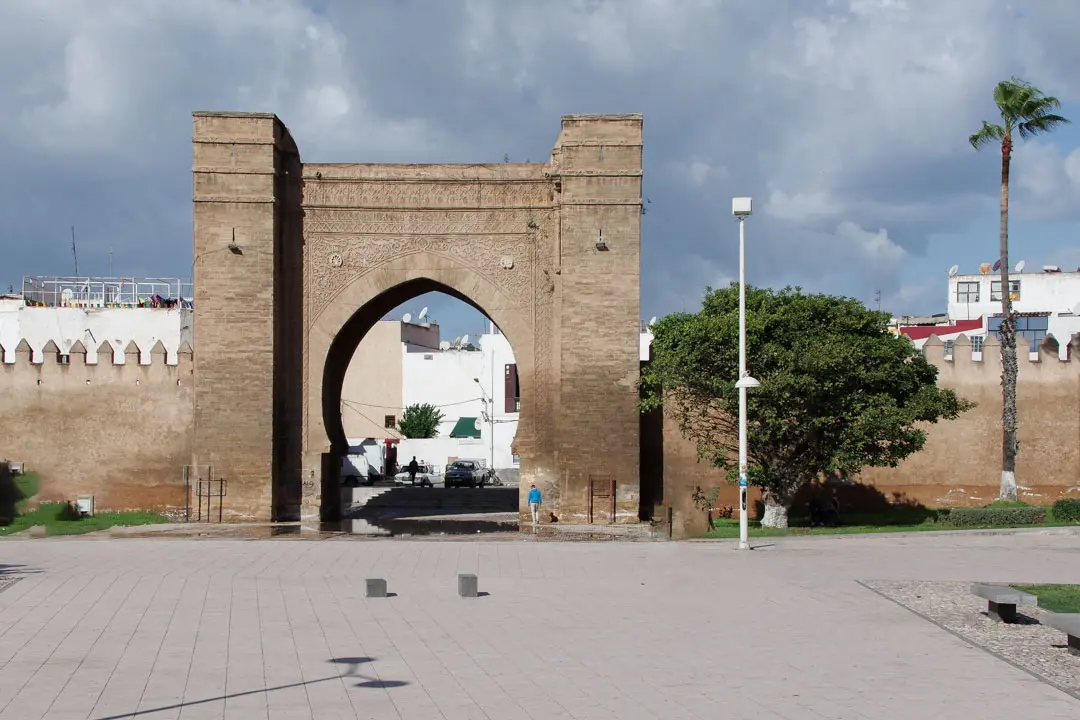Home RABAT: World Heritage The Buffer zone and the medina of Salé
The Buffer zone and the medina of Salé
The buffer zone, which covers an area of 852 hectares, is mostly made up of residential areas dating from the last century, which are full of monuments and historic sites of undeniable value.
The western and southwestern part, made up of the residential areas L’Océan, Marassa, Les Orangers, Les Jardins de l’Agdal and Al-Qbibat, extends to the Corniche de Rabat bordering the Atlantic. In addition to multiple traditional Moroccan houses and sets of remarkable modern villas, this space is home to major historical sites. Between the dwellings, part of the old aqueducts that supplied the city of Rabat with water since the Middle Ages can still be seen. Some remains are linked to the Aïn Ghboula aqueduct (dating from the 12th century, the work of Sultan Abd el Moumen, founder of the Almohad dynasty), others to the Aïn Atiq aqueduct (built in the 18th century by the Alawite Sultan Sidi Mohammed Ben Abdellah).
Other monuments dating from the 18th century, Bab al-Qbibat and Bab Marrakech are the only gates that have remained intact of the four initial gates that pierced the Alaouite Rampart. Built at the end of the 18th century, this 4,300-meter wall started from the coast, encompassed part of the Agdal and ended in the extreme south-eastern part of the Almohad ramparts.
The imposing Fort Hervé stands face to the coast, it is also known as Al Borj al Kbir or Fort Rottembourg. Built at the end of the 19th century, it was intended to strengthen the defense of the coast. Rectangular in shape, this concrete and masonry building once communicated with casemates serving as garrison accommodation and ammunition depot. It now houses the National Museum of Photography. Visitors can also discover its battery of modern cannons that point out to sea.
Located in the Agdal district and overlooking the Garden of Botanical Trials, the Belvedere Garden is a magnificent example of the “views” dear to town planner and landscape architect Jean-Claude Nicolas Forestier.
The north-eastern part of the buffer zone is made up of the residential districts of Haut-Hassan (formerly Petit Jean) and Le Riche. However, the majority of its surface is represented by the Bouregreg valley. This salty wetland is crossed by the valley which winds its way through the wide alluvial plain of the Oulja before emptying into the coast. A site of notable biological interest, the Bouregreg valley is home to a number of birds, amphibians and fish, including some rare species.
An essential component of the Bouregreg valley, the medina of Salé shares with its twin sister on the right bank a common history, experiencing significant development during the time of the Almohads and the Merinids who endowed the city with architectural gems such as the great Almohad mosque, third in order of magnitude of Morocco, the Marinid ramparts and its imposing Bab El-Mrissa gate or the Borj Addoumoue, built at the same time, and classified as a national heritage since 1914. With the arrival of the Andalusian Moriscos in the 16th and 17th centuries, the city becomes an active center of races; the audacity of the corsairs of Salé was moreover famous until England. Known also for being, for centuries, the refuge of ascetics and pious men, the medina is a high place of culture and religious life which can be proud of a large number of Hispano-Moorish riads, zaouïas, marabouts and libraries.

